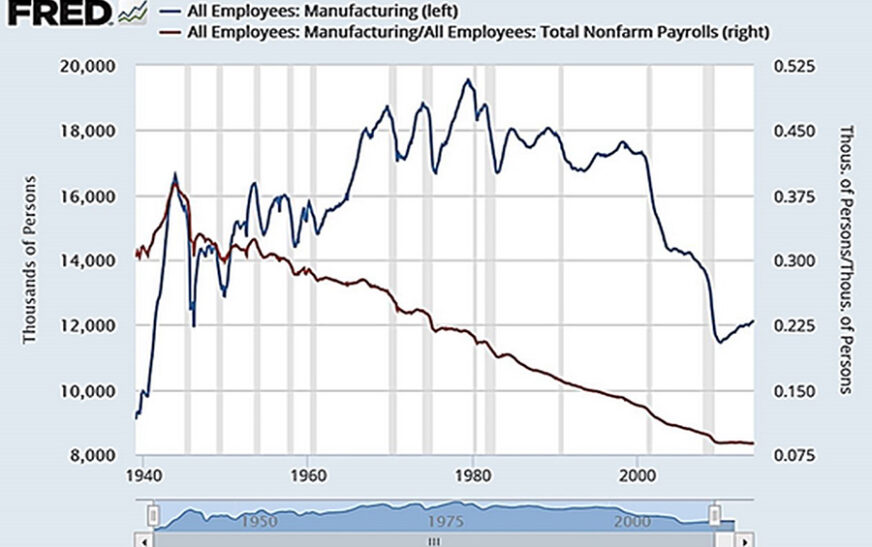In recent decades, discussions surrounding US manufacturing have been rife with apprehension, often fueled by narratives of decline attributed to globalization and the rise of China. However, a closer examination reveals a more nuanced picture that challenges these prevailing misconceptions. In this analysis, Farok J. Contractor from Rutgers Business School dismantles common myths surrounding US manufacturing, shedding light on the underlying dynamics and factors shaping its trajectory.
Rethinking Decline: A Closer Look at Economic Data
Contrary to popular belief, economic data paints a different narrative of US manufacturing. Despite rhetoric suggesting decline, the US remains a formidable force in manufacturing, boasting unparalleled productivity and substantial output. Figures indicate that until recent years, the US held its position as a leading manufacturing nation, second only to China. This underscores the resilience and dynamism of the US manufacturing sector, challenging narratives of irreparable decline.
The Job Paradox: Exploring Employment Trends
While the number of manufacturing jobs in the US has indeed witnessed a decline over several decades, attributing this solely to globalization overlooks critical nuances. The rise of automation and information and communication technologies (ICT) has significantly transformed the labor landscape, leading to enhanced productivity and output with fewer workers. This phenomenon, compounded by shifts in bargaining power and wage dynamics, offers a more comprehensive explanation for fluctuations in manufacturing employment.
Unraveling the Automation Narrative: Automation vs. Offshoring
Amid debates on the primary drivers of job displacement in manufacturing, the role of automation emerges as a significant yet often overlooked factor. While globalization and offshoring have undoubtedly impacted US manufacturing, automation and robotics have reshaped production processes, leading to workforce restructuring and productivity gains. Contractor contends that automation, coupled with ICT advancements, likely outweighs offshoring in its impact on job losses and industry transformation.
The Power Play: Declining Influence of Labor Unions
A critical aspect of the manufacturing narrative revolves around the diminishing influence of labor unions and its implications for wage distribution. Historically, unions played a pivotal role in shaping labor dynamics and securing worker rights. However, dwindling union membership and weakened bargaining power have contributed to a disparity in profit allocation, exacerbating income inequality and reshaping the labor landscape.
Looking Ahead: Implications and Areas for Further Research
As the discourse on US manufacturing continues to evolve, Contractor underscores the need for a nuanced understanding of its dynamics and implications. While globalization remains a significant factor, acknowledging the multifaceted impact of automation, ICT, and labor dynamics is crucial. Moreover, the interplay between offshoring, automation, and hypercompetition warrants further investigation, offering fertile ground for future research and inquiry into the evolving landscape of US manufacturing.
In conclusion, Farok J. Contractor’s analysis challenges prevailing narratives of decline in US manufacturing, offering a nuanced perspective that considers a myriad of factors shaping its trajectory. By reframing misconceptions and delving into underlying dynamics, this analysis invites a deeper understanding of the complexities and nuances inherent in the evolution of US manufacturing amidst the forces of globalization and technological advancement.










